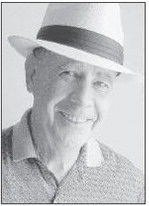Sleeping Warm


Heavy Our cold night brought the first frost.
There was a strong reminder of nights with grandparents, nippy bare floors and tons of quilts.
Their houses were chilly during winter and hot in the summer. They never had central refrigerated air nor heat. There were drafts around some windows.
There were two sources of heat; a black, coal burning potbelly stove in their bedroom and a fireplace in the living room. Cooking with a small wood-burning stove kept the kitchen warm.
My grandparents used sheets and towels made of coarse sun-dried muslin. The rough texture next to my skin was the first layer. The sheets were topped by a blanket, then three or four homemade quilts. The foremost memory of sleeping under multiple quilts was the weight of them.
Quilt making was a year long task. Families kept scraps of fabric that might have been material from a memorable shirt or dress. The pieces of material were trimmed and stitched into designs to make a panel, then the panels were stitched together to make the top.
The top and bottom of the quilt were combined with a thick layer of cotton batting sandwiched between.
My grandmother showed me a quilt made with tiny, closely spaced stitches. This was her first quilt: She pieced it together when she was six years old.
There were many quilts in the house. Most of them wore thin, then the stitches gave up. Her first quilt is the only one remaining.
Feather mattresses were large bags made of a heavy material known as “ticking.” They were filled with feathers and sewn closed at both ends.
They were also called “feather beds” or “feather ticks.” You didn’t sleep on them but in them.
In a rarely used bedroom was what remained of a corn shuck mattress topped by a feather tick.
My first cold night in a Montreal, Canada hotel, I was sure there was a mistake. There was a cover on the bed but no blanket nor quilt. I checked the closet for extra blankets and pillows there, but there was nothing.
When I eventually crawled into bed, I was surprised at how quickly my body heat warmed the bed. The coverlet was a duvet with a super lightweight stuffing inside.
The polyester insulation nearly matched the insulation value, or loft, of down.
I was snug as a bug all night, but the cover was so light I awoke to make sure it was still there.
My preference of sleeping warm in a cold room is likely a remnant memory of those feather ticks and quilts. Rather than feeling smothered by them, they provided a burden of comfort.
joenphillips@yahoo.com








